Amazon's Arm-based Graviton2 Against AMD and Intel: Comparing Cloud Compute
by Andrei Frumusanu on March 10, 2020 8:30 AM EST- Posted in
- Servers
- CPUs
- Cloud Computing
- Amazon
- AWS
- Neoverse N1
- Graviton2
Memory Subsystem & Latency
Memory performance in server chips is absolutely crucial due to the sheer core count in the system. Amazon’s Graviton2 chip has the most modern memory capabilities of our test set thanks to 8 DDR4-3200 memory controllers, providing up to a theoretical 204GB/s peak bandwidth. What’s also important, is the SoC’s cache hierarchy and the latencies it’s able to access data at.
Looking at the linear latency graph results, let’s first focus on the DRAM region and see how the Graviton2 ends up relative to the competition.
Surprisingly enough, the Graviton2 does extremely well. Although the cache hierarchies between the designs are very different, when looking at an arbitrary 128MB memory depth, the three systems are near identical. We do see that the Graviton2’s full random latency increases at a higher rate the deeper into DRAM you compare it against the AMD and Intel systems. The structural memory latency between the Amazon and AMD chips are near identical, meaning the AMD system doing better further down in random accesses probably is due to better TLBs or page-table walkers.
Our measured 81ns structural estimate figure here almost directly matches up with Arm’s published 83ns figure from a year ago, further giving credence to Arm’s published figures from back then (Arm's figure was LMBench random using hugepages, we're accounting for TLB misses in our patterns with 4KB pages).
Turning to a logarithmical representation of the same data, we better see the difference in the cache hierarchy.
Compared to the AMD and Intel CPUs, we see the N1 cores’ advantage in the doubled 64KB L1D cache. Access latencies between the different cores should be 4 cycles, with the absolute figures in nanoseconds only differing due to the clock frequency differences between the cores.
The L2 cache of the Graviton2 falls in at 1MB and the access latency here is also competitive at 11 cycles. Arm gives the option between a 512KB 9 cycle or a 1MB 11 cycle configuration, and Amazon’s designers here chose the latter option. Halfway through the 1MB L2 cache we see the latencies of some access patterns increase, and this is due to the test exceeding the capacity of the L1 TLB which falls in at 48 pages (192KB coverage) for the N1 cores, also resulting in the big jump in the TLB miss penalty curve. AMD and Intel here go up to 64 pages and 256KB coverage. To be noted in these results is AMD’s prefetchers pulling into L2, whereas Arm and Intel cores only pull into L3 for more complex patterns.
Going beyond the L2, we reach the L3 where we’re able to test Arm’s CMN-600 mesh interconnect for the first time. The cache hierarchy covers 32MB depth; the interesting aspect here is that the latency remains relatively flat and within 2ns when testing some patterns between 3MB and 32MB, meaning there's fine-grained access hashing across the chip's slices.
The average estimate structural latency of the cache falls in at around 29.6ns, which isn’t all too great when compared to Intel’s ~18.9ns L3 cache, even considering that this is split up across 32 slices versus Intel’s 24 slices. Of course, AMD’s L3 leads here at only 10.6ns, but that’s only shared within 4 CPU cores and doesn’t go nearly as deep.
What we’re also seeing here is that the Graviton2’s N1 cores prefetchers aren’t set up to be nearly as aggressive in some more complex patterns than what we saw in its mobile Cortex-A76 siblings; it’s likely that this was done on purpose to avoid unnecessary memory traffic on the chip, as with 64 cores you’re going to be very bandwidth starved, and you don’t want to waste any of that on possible mis-prefetching.
Moving onto bandwidth testing, we’re solely looking at single-core bandwidth here.
Things are looking massively impressive for the Graviton2’s Neoverse N1 cores as a single CPU core is able to stream writes at up to 36GB/s. What interesting here is that the N1 cores like the Cortex-A76 cores here take advantage of the relaxed memory ordering of the Arm architecture to essentially behave the same as non-temporal writes would on an x86 system, and that’s why the bandwidth if flat across the whole test depth.
Loading from memory achieves up to 18.3GB/s and memory copy (flip test) achieves an impressive 29.57GB/s, which is more than double what’s achieved on the AMD system, and almost triple the Intel system. From a single-core perspective, it seems that the Arm design is able to have significantly better memory capabilities.
We’re still seeing the odd zig-zagging behaviour in the L1 and L2 caches for memory copies that we saw on mobile A76 based chips, possibly cache bank access conflicts for this particular test that showcase in Arm's new microarchitecture.
I didn’t have a proper good multi-core bandwidth test available in my toolset (going to have to write one), so fell back to Timo Bingmann’s PMBW test for some quick numbers on the memory bandwidth scaling of the Graviton2.
The AMD and Intel systems here aren’t quite representative as the test isn’t NUMA aware and that adds a bit of complexity to the matter – as mentioned, we’ll need to write a new custom tool that’s a bit more flexible and robust.
The Arm chip is quite impressive, and we only seemingly needed 8 CPU cores to saturate the write bandwidth of the system, and only 16 cores for the read bandwidth, with the highest figure reaching about 190GB/s, near the theoretical 204GB/s peak of the system, and this is only using scalar 64B accesses. Very impressive.


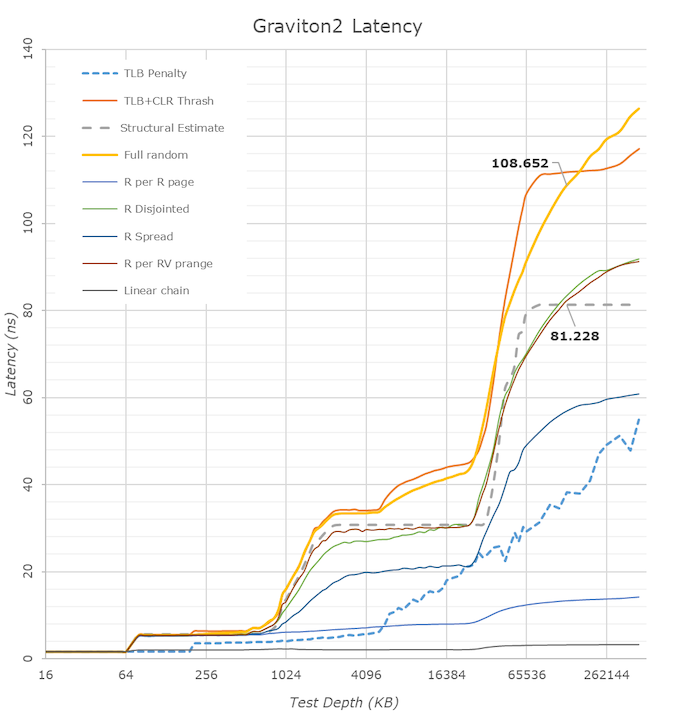
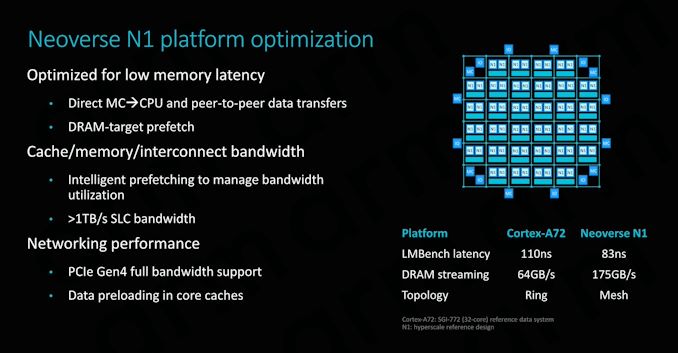
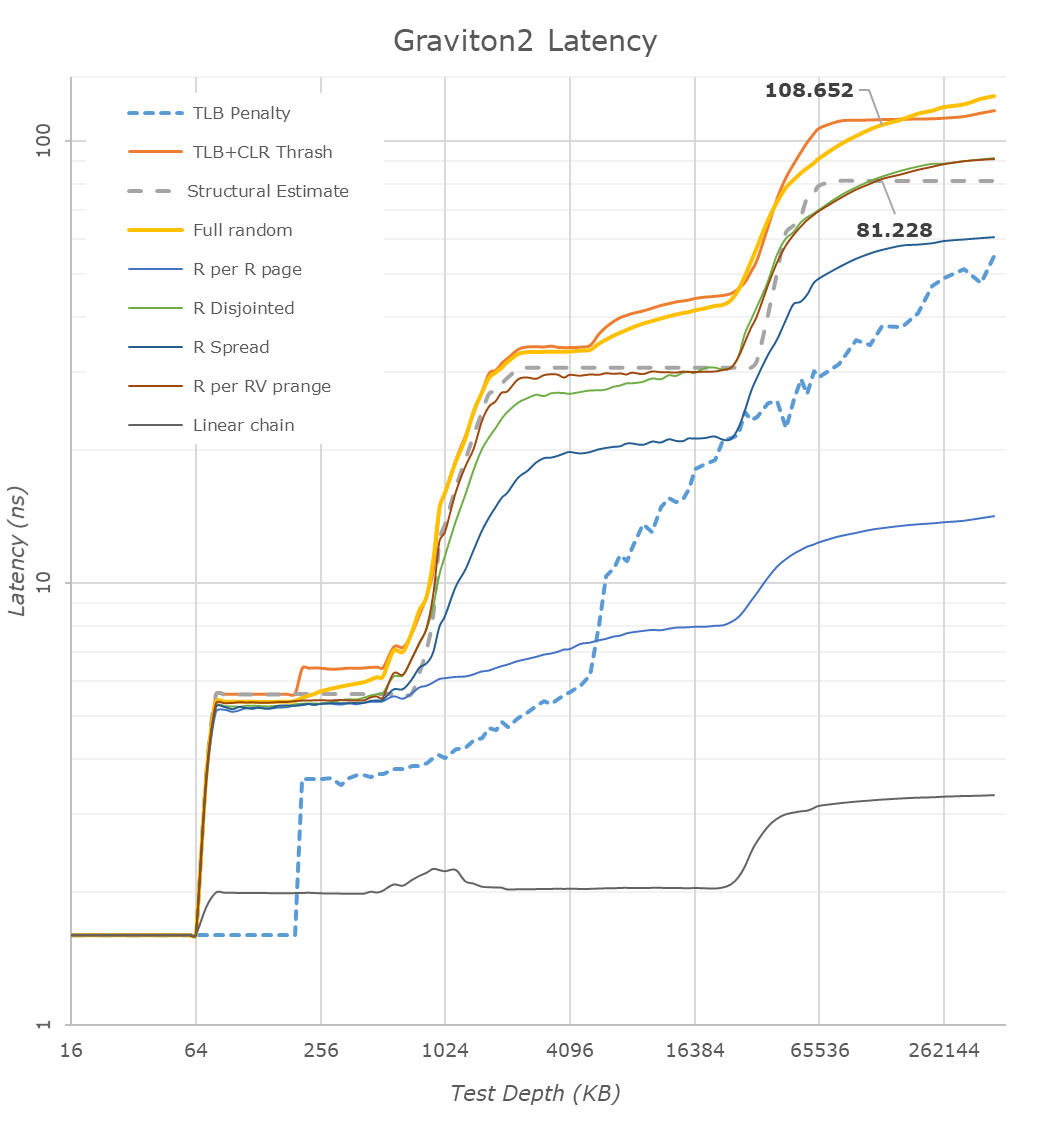
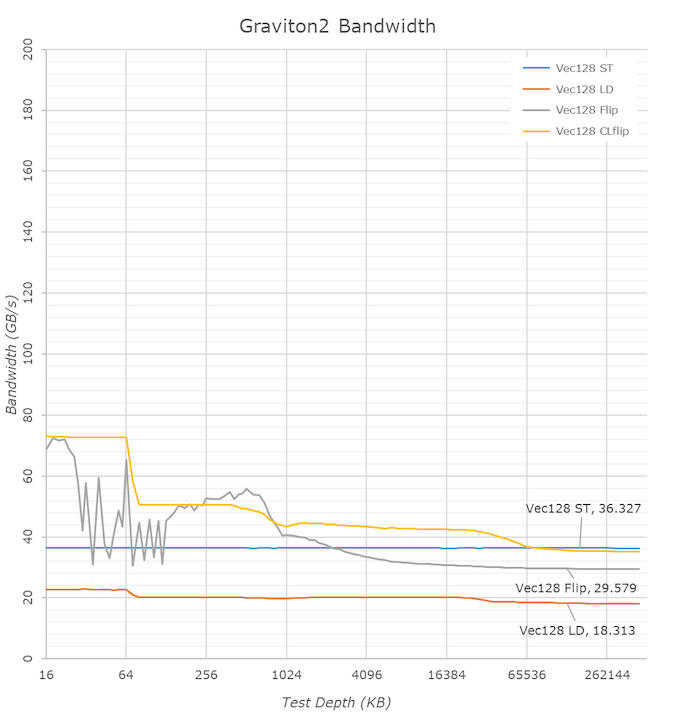
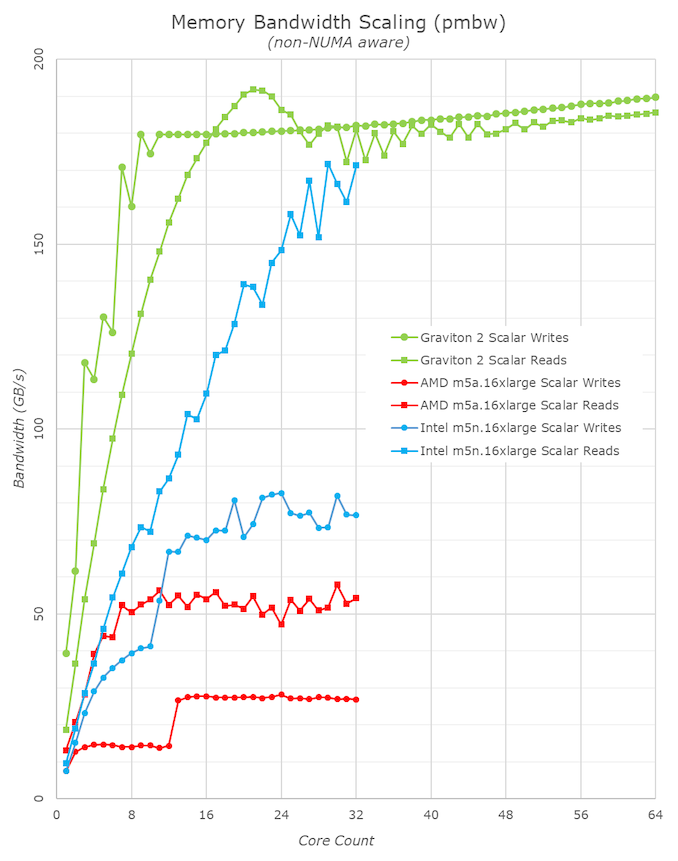








96 Comments
View All Comments
Duncan Macdonald - Tuesday, March 10, 2020 - link
The Apple CPU cores are larger and more power hungry when loaded hard than the CPU cores on the N1. A 64 CPU chip with the high performance cores from the Apple A13 would consume far more power than the N1 and would be quite a bit larger than the N1. The Apple A13 chip (in the iPhone 11) is suited for intermittent load not the sustained use that server type chips such as the N1 have to deal with.arashi - Wednesday, March 11, 2020 - link
Yikesmanedsib1 - Tuesday, March 10, 2020 - link
You are using an Epyc processor that is nearly 3 years old.Surely you should use this years model (or a 64-corer threadripper if you dont have one)
vanilla_gorilla - Wednesday, March 11, 2020 - link
You should consider reading the article and then you would know exactly why they are using those CPU.Kamen Rider Blade - Tuesday, March 10, 2020 - link
The benchmarks feel incomplete. Why don't you have a 64-core Zen2 based processor in it to compare?Even the ThreadRipper 64-core would be something.
But not having AMD's latest Server grade CPU in your benchmarks really feels like you're doing a disservice to your readers, especially since we've seen your previous reviews with the Zen 2 64 core monster.
Rudde - Wednesday, March 11, 2020 - link
Read the article! Rome is mentioned over five times. In short, Amazon doesn't offer Rome instances yet and Anandtech will update this article once they do.Sahrin - Tuesday, March 10, 2020 - link
I may be remembering incorrectly, but doesn't Gen 1 Epyc have the same cache tweaks as Zen+ (ie, Epyc 7001 series is based on Zen+, not Zen)?Rudde - Wednesday, March 11, 2020 - link
They have same optimisations as first gen Zen APUs, i.e. Ryzen mobile 2xxx. Zen+ is a further developed architecture, albeit without further cache tweaks.The cache tweaks in question were meant to be included in the origina Zen, but didn't make it in time. As such one could argue that first gen Ryzen desktop is not full Zen (1), but a preview.
Sahrin - Tuesday, March 10, 2020 - link
The fact that Amazon refused to grant access to Rome-based instances tells you everything you need to know. Graviton competes with Zen and Xeon, but is absolutely smoked by Zen 2 in both absolute terms and perf/watt.It's a shame to see Amazon hide behind marketing bullshit to make its products seem relevant.
rahvin - Thursday, March 12, 2020 - link
Don't be silly. Amazon buys processors in the thousands. There is no way AMD could have supplied enough Rome CPU's to Amazon to load up an instance at each of their locations in the time Rome has been for sale.It typical takes about 6 months before Amazon gets instances online because AMD/Intel aren't going to give Amazon the entire production run for the first 3 months. They've got about 20 data centers and you'd probably need several hundered per data center to bring an instance up.
Consider the cost and scale of building that out before you criticize them for not having the latest and greatest released a month a go. Rome hasn't been available to actually purchase for very long and the Cloud providers get special models and AMD still needs to supply everyone else as well.